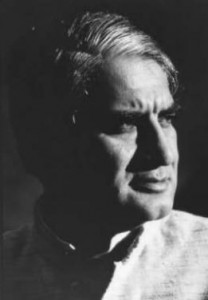The Royal Institute of British Architects (RIBA) has announced the first major UK exhibition showcasing the works of renowned Indian Architect Padmashri, Charles Correa. Rooted both in modernism and the rich traditions of people, place and climate, Correa has played a pivotal role in the creation of an architecture and urbanism for post-war India. He has designed some of the most outstanding buildings in India and has received many of the world’s most important architecture awards including the RIBA Royal Gold Medal (1984), Aga Khan Award for Architecture (1988) and Japan’s Praemium Imperiale (1994).

Image Copyrights: RIBA British Architectural Library Photographs Collection (1980s)
The exhibition celebrates Correa’s gift of his archive of over 6000 drawings to the RIBA Library. This has offered a unique opportunity to access and display the drawings, plans, photographs, models and films behind his projects. International buildings showcased in the exhibition include the Mahatma Gandhi Memorial Museum, India; the MIT Brain and Cognitive Science Centre, USA; the InterUniversity Centre for Astronomy and Astrophysics in Pune, India and the Champalimaud Centre for the Study of the Unknown in Lisbon, Portugal. The exhibition also features Correa’s designs for housing and cities, looking closely at climate change, affordable housing and his projects to improve cityscapes, including his urban masterplan for Navi Mumbai (New Bombay).


David Adjaye, architect and designer of the exhibition says:
“Charles Correa is a highly significant architect, globally and for India. His work is the physical manifestation of the idea of Indian nationhood, modernity and progress. His vision sits at the nexus defining the contemporary Indian sensibility and it articulates a new Indian identity with a language that has a global resonance. He is someone who has that rare capacity to give physical form to something as intangible as ‘culture’ or ‘society’ – and his work is therefore critical: aesthetically; sociologically; and culturally. This exhibition has presented us with an exciting opportunity to engage absolutely with his work and to think how the exhibition design can communicate the key messages. It has been an enriching experience that will feed into my own practice on many levels.”
Curator Dr Irena Murray says:
“Correa is brilliantly inventive in his deployment of certain timeless themes in Indian culture and philosophy – journey, passage, void and the representation of the cosmos. He uses them as a means to creating ambitious new spaces and structures. His deep understanding of the implications of climate, demographics, transport and community life has a universal quality and has helped structure the thematic arrangement of the exhibition.”
The program:
The RIBA presents a new landmark exhibition accompanied by the ‘Out of India’ season of talks and events. Celebrating the work Charles Correa it explores stories and influences from modern urban India. Booking for all events will open on Monday 8 April.
For more details please visit:
http://www.architecture.com/WhatsOn/RIBATrustProgramme/CharlesCorreaOutofIndiaSeason.aspx
News Credits: http://www.e-architect.co.uk/






